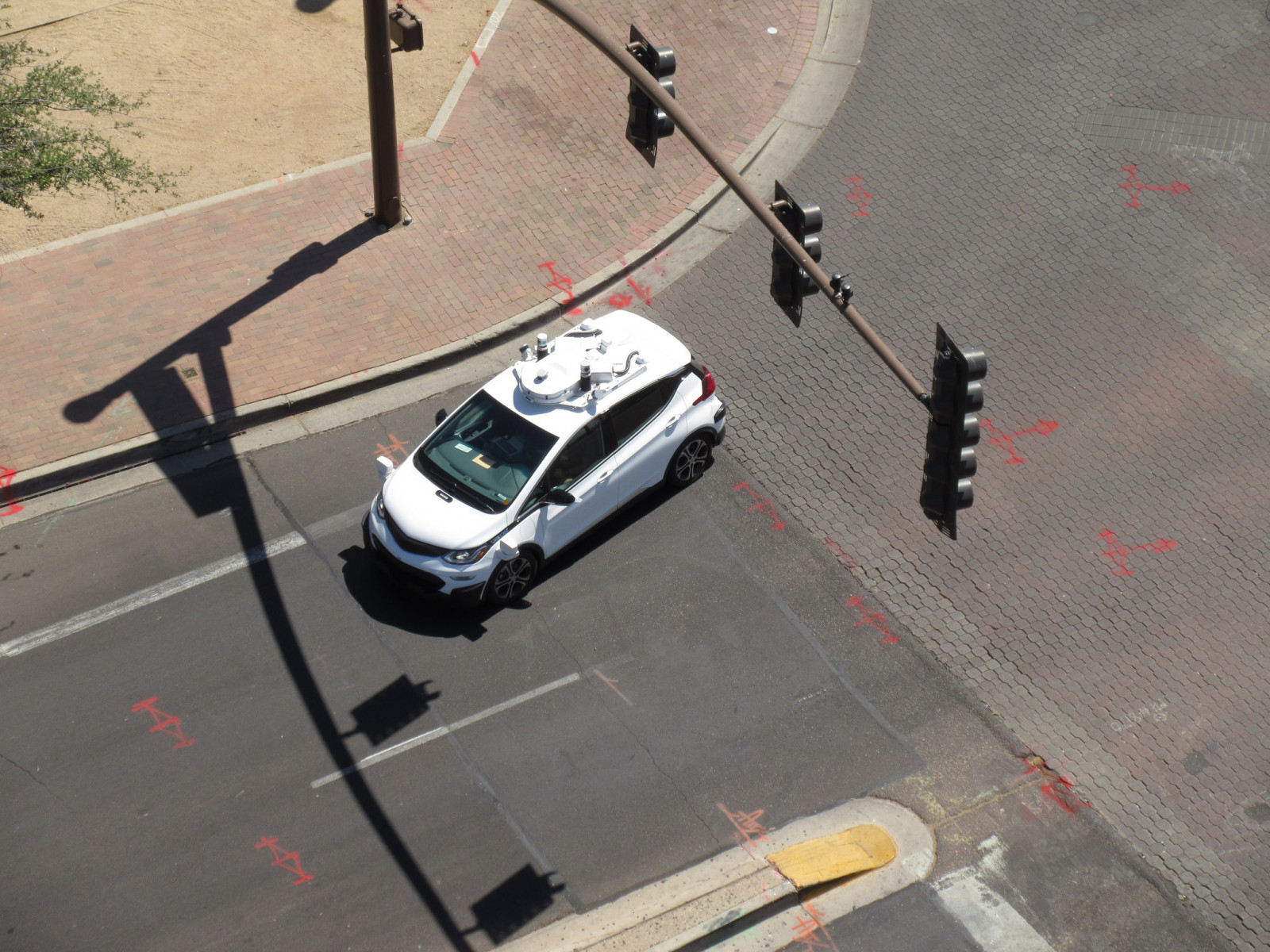How Self-driving Cars Will Change the World As We Know It

The subject of self-driving cars is no longer confined to the technology world. With companies like Tesla, Intel, Uber, and Google all developing autonomous vehicles - the discussion is now well and truly in the public space. And whilst a driverless society may look like a blur in the distance - we're accelerating towards it much faster than we realize.
It's easy to understand the concept of a self-driving car. But not too many people understand how they work, what a driverless world might look like - and what effects this will have on the job market. There are five levels of driving automation [1]. We are currently seeing the emergence of SAE level 3 - cars that can drive by themselves under human supervision. But as we move towards levels 4 and 5 - that's where things really get interesting.
How Do Autonomous Vehicles See the World?
It's clear that human beings have not evolved with driving in mind.
With front-facing eyes stemming from our days as hunters, we have a narrow field of vision. Combine this with unreliable hearing, reaction times, and movement speed - and accidents are waiting to happen. Throw in some cell phones on top, and you've got a deadly mix. [2]
The proof is in the numbers. There are around 40,000 deaths [3] and more than 2 million serious injuries on US roads every year. Self-driving cars have the potential to reduce these numbers considerably.
To achieve this, autonomous vehicles do not need to be as good as human drivers - they need to be far better. With a system of radars, cameras, and lidar (Light Detection and Ranging) - autonomous vehicles see the world in a way no human ever can:
- Lidar shoots millions of light pulses in every direction and records how long they take to come back. This builds a 360-degree view of the car's environment, which is then processed by the AI system.
- Radar is already used in features like adaptive cruise control and automatic braking. Radar can detect objects (like cars, bikes, and pedestrians) from hundreds of yards away - as well as their direction and movement speed.
- Cameras are the 'eyes' of autonomous vehicles. With up to 12 cameras working at once, the car's AI system sees the surrounding environment in ultra-high resolution.

None of these systems are sufficient all on their own. But by combining all three with powerful AI - the reality of self-driving cars starts to take shape.
Using Simulations to Accelerate AI Learning
For car companies, the primary challenge of developing self-driving vehicles lies not in the hardware - but the software.
And to improve the software, they need data. And fast.
In the early days of the self-driving arms race - manufacturers discovered that collecting data from the real world was far too slow of a process.
Although real-world miles are valuable - new methods were needed to speed up the data collection rate.
The answer? Simulation.
Waymo - formerly known as the Google Car Project - logged eight million miles [4] of real-world test-driving in its first nine years.
They now simulate nine years' worth of real-world driving every single day.
In fact, their Matrix-like virtual world, called 'Carcraft', has already simulated over five billion miles of driving data. And has a fleet of over 25,000 virtual cars.
By capturing real-world data and using it in a simulated world - the number of test-driving miles grows exponentially. And AI systems can learn at a faster and faster rate.
The Inevitable Effects on the Job Market
Despite the obvious benefits of driverless vehicles - there will also be negative impacts on the driving and transport industries.
In the US, there are around five million people who drive for a living [5]. This includes truck, bus, van, taxi, and 'e-hailing' drivers like Uber and Lyft. Once we reach SAE level 5 - vehicles that need no human interaction - it seems clear that many (or all) of these jobs will be obsolete.
After all, a self-driving truck can work 24 hours a day, takes no breaks or holidays, requires no wages - and never loses concentration.

In the case of Tesla's all-electric semi - it may even save over $100,000 a year on fuel. [6]
It's hard to see transport companies persisting with human drivers once safer and cheaper AI drivers enter the market.
In addition, there are around 750,000 Americans working as auto repairers, technicians, and mechanics. With fewer collisions and electric vehicles requiring far less maintenance [7] - many of these jobs may also be under threat.
What Might the Future of Driving Look Like?
There are benefits to self-driving cars that aren't obvious at first. Aside from your car being able to drive and navigate for you, there are other flow-on effects:
- Reduced traffic and congestion. As more cars become autonomous, traffic congestion (particularly 'stop-start' traffic) can be reduced. Merging, stopping, and lane changes all become easier as cars can talk with each other.
- Better fuel economy. With a reduction in stop-and-go traffic, cars also use less fuel. A study found that even a small percentage (5%) of autonomous cars on the road can reduce fuel consumption by up to 40%. [8]
- Elimination of 'parking anxiety'. People who dread searching for a parking space will love self-driving cars. They will be able to drop you at your destination - and then park all by themselves. In cities, they may even park in outer areas to reduce congestion.
As self-driving cars develop at a rapid pace, there are many safety, legal, and even ethical questions [9] still to be answered.
Despite the simulations, nobody knows quite what the world will look like without humans behind the wheel.
But with less traffic, better fuel economy, and the saving of lives - most people are sure to embrace a driverless society.
PICTURE CREDIT:
https://www.flickr.com/photos/donotlick/5226577623/
https://www.flickr.com/photos/zombieite/27157185377/
SOURCES:
[1] https://www.sae.org/news/press-room/2018/12/sae-international-releases-updated-visual-chart-for-its-%E2%80%9Clevels-of-driving-automation%E2%80%9D-standard-for-self-driving-vehicles
[2] https://www.edgarsnyder.com/car-accident/cause-of-accident/cell-phone/cell-phone-statistics.html
[3] https://www.cnbc.com/2018/02/14/traffic-deaths-edge-lower-but-2017-stats-paint-worrisome-picture.html
[4] https://www.businessinsider.de/waymo-engineer-explains-why-testing-self-driving-cars-virtually-is-critical-2018-8?r=US&IR=T
[5] https://www.latimes.com/opinion/op-ed/la-oe-greenhouse-driverless-job-loss-20160922-snap-story.html
[6] https://www.zdnet.com/article/what-is-the-tesla-semi-everything-you-need-to-know-about-teslas-semi-autonomous-electric-truck/
[7] https://www.fleetcarma.com/electric-vehicles-lower-maintenance-costs/
[8] https://phys.org/news/2018-02-autonomous-vehicles-traffic.html
[9] https://www.nature.com/articles/d41586-018-07135-0
Thanks for helping to keep our community civil!
This post is an advertisement, or vandalism. It is not useful or relevant to the current topic.
You flagged this as spam. Undo flag.Flag Post


